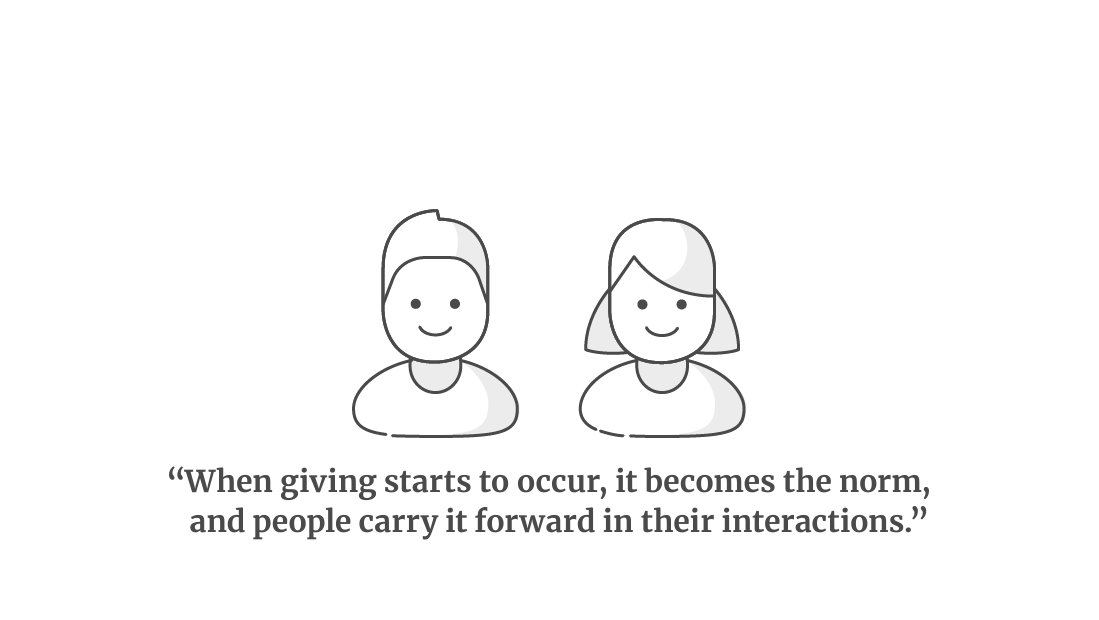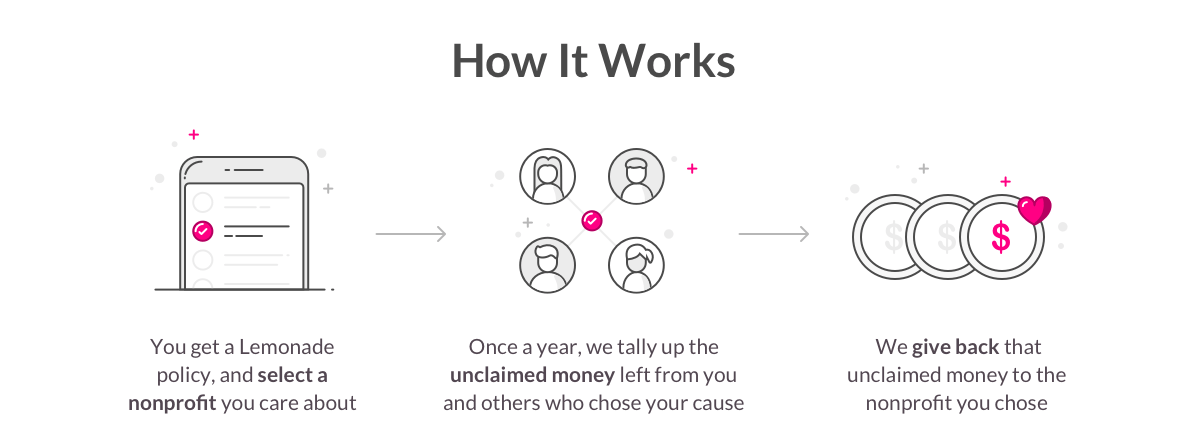When you buy a phone or book a vacation, you probably read several customer reviews to make sure you get the best bang for your buck. Because in most areas of life, we know it’s important to base our spending decisions on evidence, not guesswork.
But when it comes to giving to charities, our reasoning tends to flip. Turns out, only 3% of people research how a charity spends their money before donating, according to a study by the Money for Good project.
That means most of us give our money away without even knowing if it will actually make an impact.
It speaks to that fundamental question about charity: Why do people give to begin with?
Why do people give?
Research shows that giving is essentially a social act.
We choose causes to donate to based on personal experiences, or friends who are raising money for a particular organization. For example, a study by the University of San Diego shows that people give significantly more to their university if their former roommate asks, instead of a complete stranger.
And it’s not just our friends and families who influence us. According to online donation platform JustGiving, if we see that a donor before us made a large donation, we’ll most likely increase our own donation.

We’re also drawn to immediate causes, even if only a small number of people will be impacted. Malaria kills far more people than natural disasters such as earthquakes. But since this disease is ongoing and doesn’t make the news as often, malaria charities don’t evoke the same emotional urgency in us.
But, there’s another reason why people give: the ‘Warm Glow.’
The Warm Glow
In the late 1980s, economist James Andreoni argued that internal motives for giving were much more important than had previously been acknowledged. He came up with a name for his thesis — the warm-glow theory — and it stuck.
In the warm-glow view of philanthropy, people aren’t giving money to cure cancer; they’re giving money to feel the ‘glow’ that comes with being the kind of person who’s helping to cure cancer.
And in a study conducted at the University of Sussex, psychologists confirmed that Andreoni’s ‘Warm Glow’ is scientifically proven.
Their study, published in NeuroImage, analyzed existing research showing the brain scans of more than 1,000 people while they’re making charitable decisions.
For the first time, they split the analysis between what happens in the brain when people act out of genuine altruism – where there’s nothing in it for them – and when they act with strategic kindness – when there is something to be gained as a consequence.
The Sussex scientists found that reward areas of the brain are more active – i.e. use up more oxygen – when people act with strategic kindness.
But they also found that acts of altruism, with no hope of personal benefit, activate the reward areas of the brain, too. Some areas of the brain were even more active during altruistic generosity, indicating there is something unique about being altruistic with no hope of gaining something in return.

Do we need to give better?
The problem is, things like the ‘Warm Glow’ can distract us from giving to the charities that need it most.
As Richard Vevers, founder of The Ocean Agency, told us:
“People believe causes receive far more support than they actually do. The environment is a great example – only about 1% of charitable giving in the US goes towards protecting the environment. The situation for ocean conservation is even worse. It attracts less than 0.2% of charitable giving, even though it is one of the world’s biggest challenges – keeping the ocean healthy is essential to all life on Earth.”
We need to try and find ways to optimize our giving so it makes the most impact.
Effective Altruism
Here’s where effective altruism comes in.
Coined by University of Oxford professor William MacAskill, effective altruism looks at how we can do as much good as possible with the resources we have at our disposal.
Altruism means wanting to help other people; but adding in the effectiveness component is a more complex idea – because it’s about doing something well.
MacAskill gives a simple example:
“Imagine you could save five people from drowning, or you could save one person from drowning. It’s a tragic situation and you can’t save both. So, you choose to save the five, rather than the one, because there are five times as many interests at stake.”
Similarly, if you give to one charity, you might save one life. But if you give the same amount of money to another charity, you might save hundreds of lives.
When evaluating a charity, effective altruism suggests we should prioritize these characteristics:
- Scale – how many lives are impacted?
- Neglect – how many resources have already been devoted to it?
- Solvability – would additional resources solve the problem once and for all?
Take New Story, a tech nonprofit (and Lemonade Giveback partner) dedicated to building affordable homes for disaster victims.
There are over one billion people living without access to adequate shelter (scale), and traditional homebuilding alone is unable to meet the demand for shelter (neglect).
So, New Story partnered with a homebuilding robotics company to develop the first 3D home printer, designed to build a new home in under 24 hours (solvability).
It’s this type of innovative thinking that effective altruists are aiming for.
Another Lemonade Giveback partner that works to ensure effective altruism is charity: water.
They treat their social impact arm and operations sides of their business differently – they have separate purposes, fundraising goals, and bank accounts.
This means charity: water can guarantee that every public dollar donated helps bring clean water to people in need – so you never need to worry that your money is not going where it’s supposed to.
And, with 1 in 10 people lacking access to clean water, the scale of the issue at hand is huge.
Choosing a cause
At Lemonade, social impact is baked into our profit model through the Lemonade Giveback.

We want to make it easy for you to do good. This means we also need to make sure all the charities our policyholders choose from are transparent, impactful, and most importantly – effective.
Many of our customers recommend charities they’re passionate about, and we research all our charities before adding them to the Giveback. Once a year, we calculate the annual Giveback, and find out exactly what impact your unclaimed premium has – breaking it into simple stats, like we did for the 2019 Giveback here.
Websites like Giving What You Can, Give Well and 80,000 hours are also great resources for finding effective charities. They conduct in-depth research aiming to determine how much good a cause accomplishes per dollar spent.
Head over heart
In a world that is inundated with people who need help, it can be increasingly hard to know how, and where, we should give our time and money.
Our hearts move us more than our heads. This might not always be a good thing, but it’s how most of us live. However, if you choose a cause with great prospects, and tested solutions, you can have an enormous impact.
Take a look at the full list of charities in the Lemonade Giveback program.